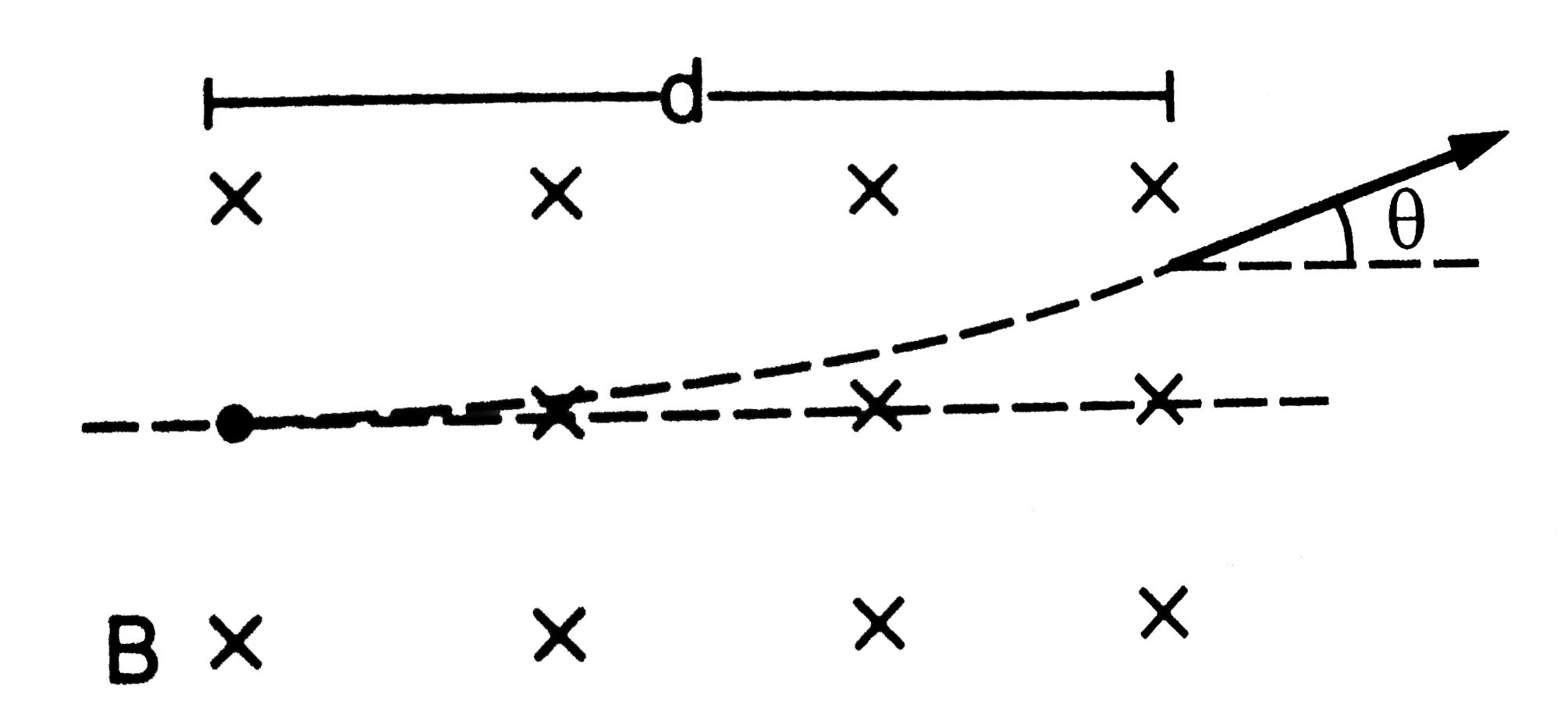A charged particle of mass m and charge q travels on a circular path of radius r that is perpendicular to a magnetic field B. The time takeen by the particle to complete one revolution is
2μmqB
2πq2Bm
2πqBm
2πmqB
The correct Answer is:d
To find the time taken by a charged particle of mass m and charge q to complete one revolution in a magnetic field B, we can follow these steps:
Step 1: Understand the forces acting on the particle
When a charged particle moves in a magnetic field, it experiences a magnetic force that acts as the centripetal force required to keep it moving in a circular path. The magnetic force FB is given by:
FB=qvBsinθ
Since the particle is moving perpendicular to the magnetic field, θ=90∘ and sin90∘=1. Therefore, the magnetic force simplifies to:
FB=qvB
Step 2: Set the magnetic force equal to the centripetal force
The centripetal force Fc required to keep the particle moving in a circular path is given by:
Fc=mv2r
Setting the magnetic force equal to the centripetal force, we have:
mv2r=qvB
Step 3: Solve for the radius r
From the equation above, we can rearrange it to find the radius r:
mv2=qvBr
Dividing both sides by qv (assuming v≠0):
r=mvqB
Step 4: Find the time period T
The time period T (the time taken to complete one revolution) is given by the formula:
T=2πrv
Substituting the expression for r from Step 3:
T=2π(mvqB)v
Step 5: Simplify the expression
The v in the numerator and denominator cancels out:
T=2πmqB
Conclusion
Thus, the time taken by the particle to complete one revolution is:
T=2πmqB
When a charged particle moves in a magnetic field, it experiences a magnetic force that acts as the centripetal force required to keep it moving in a circular path. The magnetic force FB is given by:
FB=qvBsinθ
Since the particle is moving perpendicular to the magnetic field, θ=90∘ and sin90∘=1. Therefore, the magnetic force simplifies to:
FB=qvB
The centripetal force Fc required to keep the particle moving in a circular path is given by:
Fc=mv2r
Setting the magnetic force equal to the centripetal force, we have:
mv2r=qvB
From the equation above, we can rearrange it to find the radius r:
mv2=qvBr
Dividing both sides by qv (assuming v≠0):
r=mvqB
The time period T (the time taken to complete one revolution) is given by the formula:
T=2πrv
Substituting the expression for r from Step 3:
T=2π(mvqB)v
The v in the numerator and denominator cancels out:
T=2πmqB
Thus, the time taken by the particle to complete one revolution is:
T=2πmqB
Topper's Solved these Questions
- MAGNETIC FIELD AND FORCESBOOK - DC PANDEY ENGLISHCHAPTER - MAGNETIC FIELD AND FORCESEXERCISE - Match the following
4 Videos
- INTERFERENCE AND DIFFRACTION OF LIGHTBOOK - DC PANDEY ENGLISHCHAPTER - INTERFERENCE AND DIFFRACTION OF LIGHTEXERCISE - Level 2 Subjective
5 Videos
- MAGNETICSBOOK - DC PANDEY ENGLISHCHAPTER - MAGNETICSEXERCISE - MCQ_TYPE
1 Videos
Similar Questions
A charged particle of mass m and charge q describes circular motion of radius r in a uniform magnetic field of strength B the frequency of revolution is
View SolutionA particle of mass m and having charge q is moving in a circular path of radius r in the presence of a uniform magnetic field. The particle breaks into smaller fragments X and Y of equal mass. The fragment X now has charge q3 and the fragment Y has charge 2q3. Immediately after the fragmentation, X comes to rest. The radius of the path of Y is now rY. The ratio rYr is ______________.
View SolutionA particle of mass m and charge q is projected into a region having a perpendicular magnetic field B. Find the angle of deviation of the particle as it comes out of the magnetic field if ihe width d of the region is
2mvqB

View SolutionIf a charged particle is a plane perpendicular to a uniform magnetic field with a time period T Then
View SolutionThe momentum of α-particles moving in a circular path of radius 10 cm in a perpendicular magnetic field of 0.05 tesla will be :
View SolutionA particle of mass m and charge q is projected into a region having a perpendicular magnetic field B. Find the angle of deviation fo the particle as it comes out of the magnetic field if the width d of the regions is very smaller then

View SolutionA particle of mass m and charge q is projected into a region having a perpendicular magnetic field B. Find the angle of deviation fo the particle as it comes out of the magnetic field if the width d of the regions is very smaller then

View SolutionA charged particle of charge q and mass m enters perpendiculalry in a magnetic field B. Kinetic energy of particle is E, then frequency of rotation is
View SolutionIf a charged particle enters perpendicular in the uniform magnetic field then
View SolutionA charged particle of mass m is moving with a speed u in a circle of radius r. If the magnetic field induction at the centre is B, the charge on the particle is
View Solution
